For the first time ever, two environment-friendly plant species have attracted more than 1500 participants from all over China and abroad. During three days, from 25th to 27th June 2018, an event organised by the “Bamboo and Rattan Congress” (BARC) in Beijing delivered a fresh look into sustainable development by introducing the environmental properties of bamboos and rattans.

As it is more urgent than ever to raise awareness about the global issues threatening our environment, the “China Biodiversity Conservation and Green Development Foundation” (CBCGDF), which is a leading nationwide non-profit NGO dedicated to promoting environmental energy and biodiversity protection, co-organised a parallel forum session titled “Green Economy and Sustainable Development Parallel Forum” with the “International Bamboo and Rattan Organisation” (INBAR) on June 27th 2018.
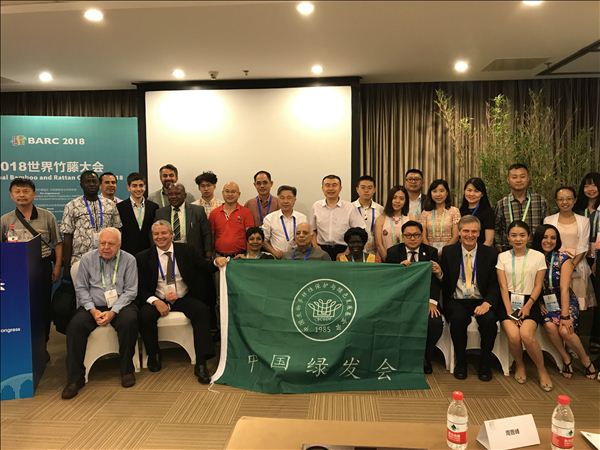
The first half of the meeting started at 11.am with Mr. Xie Boyang, member of the State Department, former vice chairman of the “All-China Federation of Industry and Commerce”, member of the 12th National Committee of the Chinese People's Political Consultative Conference, head of the China Biodiversity Conservation and Green Development Foundation, delivering an opening speech congratulating the first international “Bamboo and Rattan Congress” on its third day and thanking everyone for attending the “Green Economy and Sustainable Development Parallel Forum”.
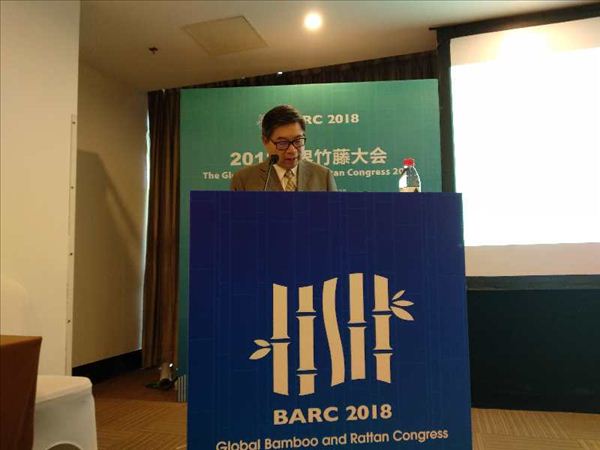
To begin this parallel forum, Mr. Deng Jihai, Chairman of “International Green Economy Association” (IGEA), gave a speech on how to develop a “Green Economy”, which is an innovative economic model combining both the economy and the environment. He asserted that environmental protection has always been nonprofit and largely aimed for social and public purposes. According to him, companies and organisations should, in the long-term perspective, be actively promoting and developing a “Green Economy”, thus allowing the growth of “Green Industries”. At the BARC we learned that bamboo and rattan, besides being highly ecological, are versatile. This uniqueness guarantees the product to be marketable and thus to generate profit. Therefore, we can state than bamboo and rattan are compatible with the “Green Economy” model. Furthermore, Chinese Prime Minister Li Keqiang said late on June 25 2018 that China will facilitate the sustainable development of the global bamboo and rattan industry by working with all countries. Bamboo and rattan can indeed replace wood and be used for the paper, charcoal and building industries. Another surprising characteristic of Bamboos is their astonishing growth rate (more than three feet each day for some species), allowing a drastic reduction of deforestation.
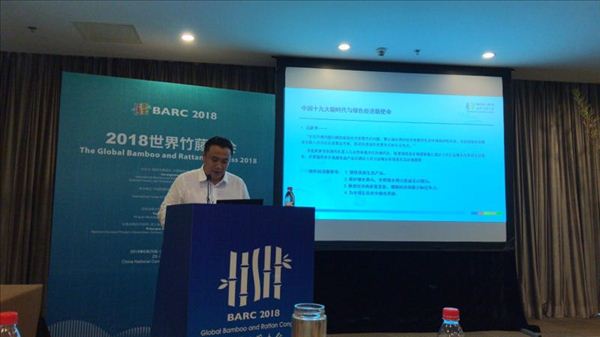
If combining ecology and economy sounds a bit complicated in the large scale, Nora Bateson, member of the club of Rome, award-winning filmmaker, as well as President of the International Bateson Institute, rather suggests a focus on the individual level. At the “Green Economy and Sustainable Development Parallel Forum”, she shared a digital speech entitled “Embracing the Complexity of Sustainable Development Goals”. Her video explains what these goals would be, but also why it is necessary to take a step back in order to better understand and support sustainable development. She calls for a “combination of fields”. Bateson takes the example of a mother making breakfast for her children. Preparing food seems to be a mundane task. However, despite its easiness, this task is the result of a long history. The food consumed by the world population mainly finds its origins in the food industry. Each step in its system — food production, processing, transportation, storage, distribution and marketing — impacts the environment. In response to the increasing demand for food, industrial farming has caused a marked degradation of land quality due to soil loss and deforestation. Additionally, in many countries, working conditions are not respected and the situation of workers stays unsatisfactory. For these reasons, Bateson asserts that there is an interdependency that needs to be taken into account. “You can’t really separate the soil from equality from economy from the oceans from the atmosphere or the water. These things are ultimately, completely interdependent.” she said. What Bateson really is interested in is “how we begin to become as familiar as possible with the nature of that interdependency.” It is not only about caring of our children’s nutrition, it is about having a complete overview.
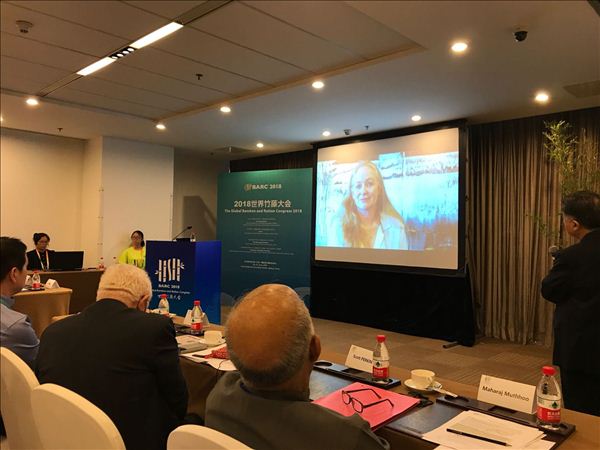
Subsequently, Dr. Maharaj K. Muthoo, President of the Roman Forum, Chairman of the “International Bamboo and Rattan Organisation” (INBAR), professor at the Beijing Municipal Bureau of Landscaping, gave a quite impressive speech. Muthoo, who holds a doctorate degree in Natural Resources and Sustainable Development from Oxford University and a Master Degree in Public Policy from Harvard University, advocated for the globalisation of ecology. During his speech, he claimed that forests should be used in such a manner that their regeneration is effective. This goal could be achieved with the help of Bamboo! Indeed, thanks to its regenerative properties and to the many other environment-friendly aspects of Bamboo, local green plants could become “Global Green Gold”. Moreover, he believes there is a lack of leadership in the ecological field, and that ecosystems must be well managed. In his words, Homo sapiens is such small species compared to so many others. Therefore, ecological poverty has to be eradicated such that there is harmony between ecology and humanity. “Be ready for change. It is only the end of the beginning.” .
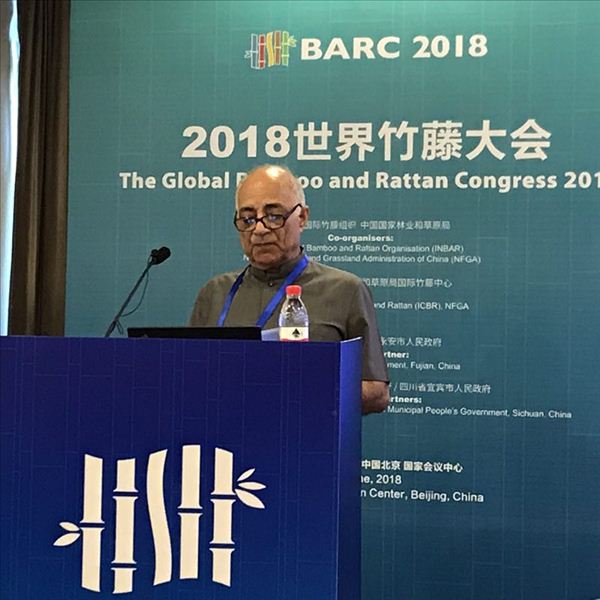
In the second half of the meeting, Prof. Fred Dubee, Director of the “China Biodiversity Conservation and Green Development Foundation”, former Senior Officer at the “Executive Office the United Nations Secretary General”, former Senior Advisor at the "United Nations Global Compact” made a presentation to highlight the immediate danger of climate change.
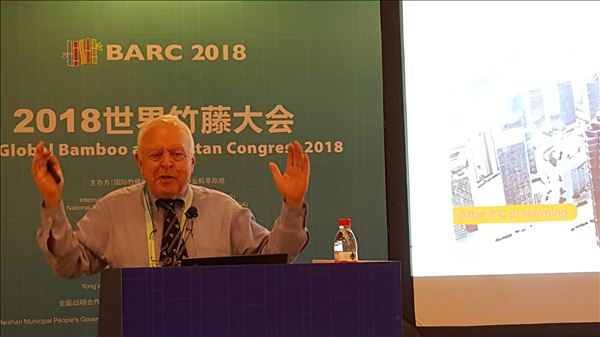
China being responsible of one third of the total atmospheric concentration of carbon dioxide, we can admit that climate change is a great issue. However, the world also faces major threats to its biodiversity. WWF China Director-General Mr. Lu Sicheng expressed concern about the loss of biodiversity. Within the next 30 years as many as half of the species on earth could die in one of the fastest mass extinctions in the planet's history. As a matter of fact, Mr. Sicheng said that number of vertebrate species had fallen by 58% between 1970 and 2012. “We have reached the edge of the cliff, and once we fall into it, the Earth’s ecosystem will cease to exist for millions of years” he said.
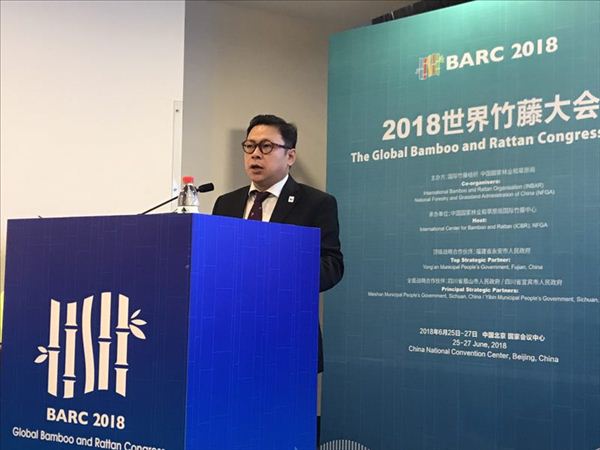
Afterwards, Mr. Scott Perkin, Head of IUCN Asia’s Natural Resources Group, addressed the issue of forest landscape restoration. “There are more than 2 billion hectares of land that should be restored globally, and 400 million hectares are in Asia. We used to grow large numbers of species in large quantities, but that didn’t help the ecology much. The concept of forest restoration should mainly serve ecology. We are talking about repairing future, not about recovering the past. So, the restoration of the forest landscape is not just about planting trees, it is about respecting the biodiversity.”
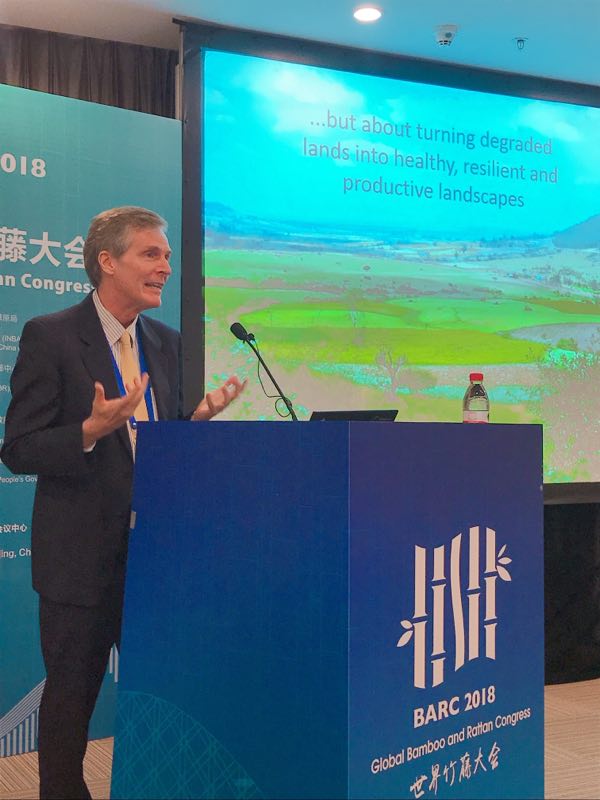
At the end of this event, Academician Yang Huanming, the speakers, as well as high-level officials from various countries such as Ethiopia’s Deputy Member of Parliament, shared their thoughts about this event and exchanged views and information on biodiversity conservation. The Secretary-General of CBCGDF concluded: “The end of this forum means the beginning of a high-level and wide-range international dialogue. CBCGDF will continue to provide open, high-quality and effective platforms. We hope that we will have more opportunities for cooperation in the future. Thank you all, thank you to the colleagues who participated in the conference, thank you for the video support from the scientific community platform.”
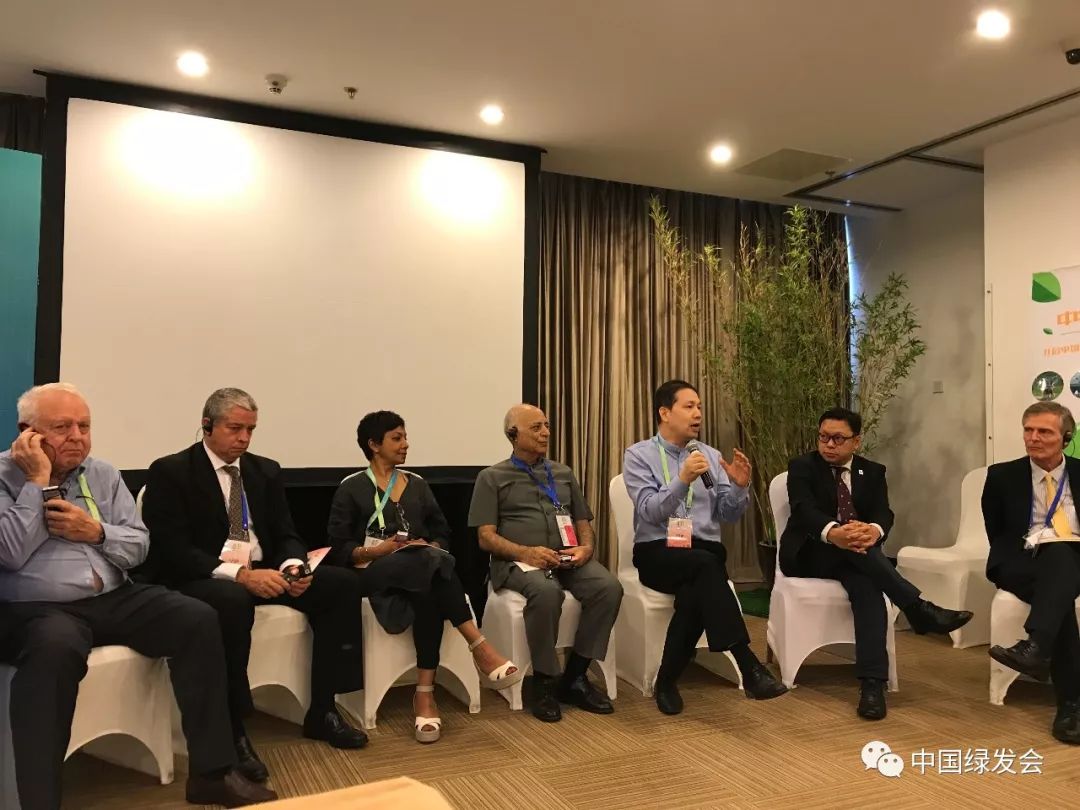
(Roundable discussion)

(From left to right: Mr. Scott Perkin, Prof. Fred Dubee, Dr. Zhou Jinfeng, the SG of CBCGDF, and Mr. Yang Huanming)
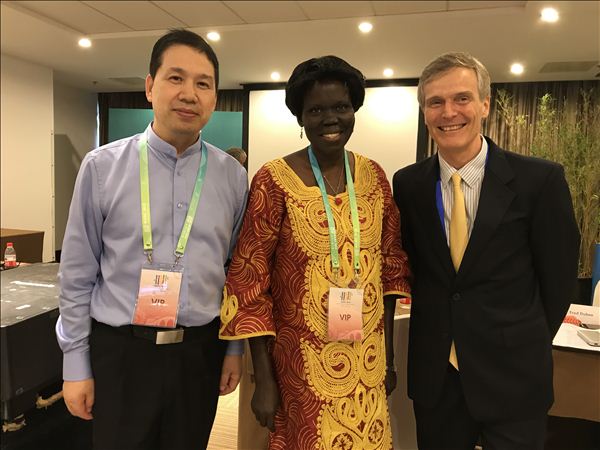
(Photo source: CBCGDF)
by/ Eddy Mayar Ariss
